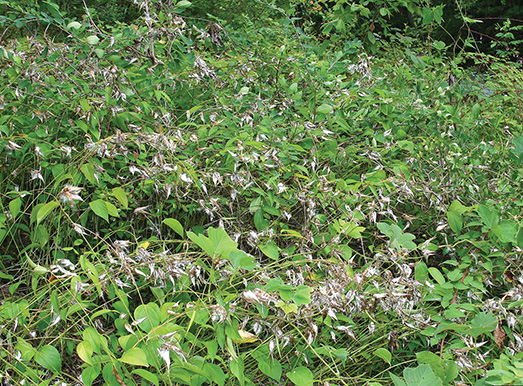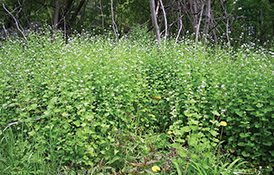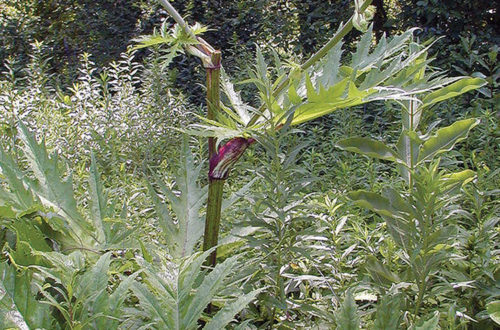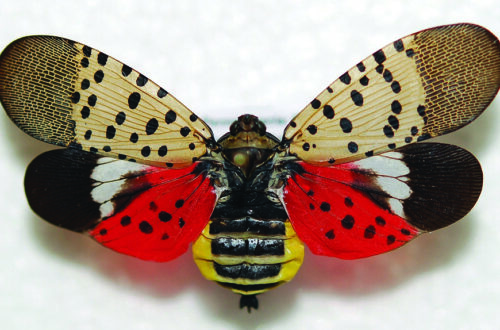By Will Rowlands
Black swallow-wort (Cynanchum nigrum) is an herbaceous, climbing, perennial vine that can grow up to 6 feet in length/height. It can climb by twining or ramble on the ground.
It’s native to the Mediterranean coasts of France, Italy, Portugal and Spain and is considered invasive in Connecticut. It was reportedly cultivated in greenhouses in Ipswich, Mass. and the Harvard Botanical Garden where it escaped into the wild.
Its botanical synonyms are Cynanchum louisae and Vincetoxicum nigrum. Common names include Louise’s swallowwort, climbing milkweed and black dog-strangling vine.
This plant will take over meadows, pasture, old fields and quarries, hedgerows, vacant lots, roadsides, river banks, transportation and utility corridors where it creates tangled thickets and outcompetes the native flora. It tolerates some shade but loves sunny open spaces.
Reproduction
Plants have rhizomatous roots that can sprout new plants.
In addition, the seeds can be transported by water and/or wind.
Stems
The twining stems are covered with downy hairs. Although a relative of milkweed, its sap is clear and watery (not milky).
Foliage
The simple leaves, which are arranged oppositely, are green and have a lanceolate to oval shape. They’re 2-5 inches long and 1-3 inches wide with a pointed tip and a short petiole.
Flowers
Clusters of 6-10 purple-brown flowers with white hairs bloom from June to September. The small (0.25 inch) star-shaped flowers have five-pointed petals and a pale green or yellow center.
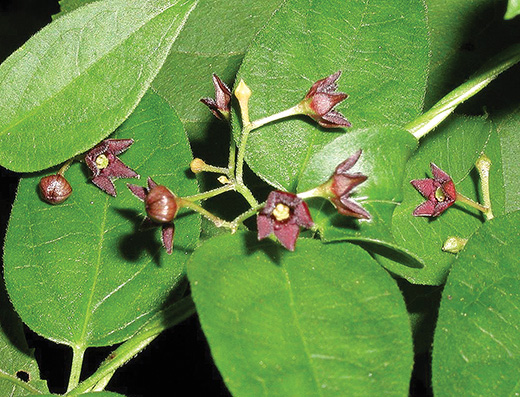
Seeds
The slender seedpods, which are similar to those of milkweed (to which it’s related), are arranged in pairs and grow to about 2 or 3 inches in length. They look a little bit like peppers or okra. They start out green but turn brown when ripe.
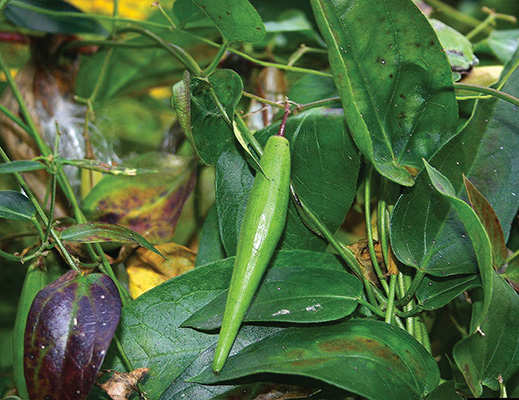
They turn brown as they mature.
When mature, they split open and release small flattened seeds along with a white fluff that acts as a parachute for wind dispersal and can also attach to deer. The pods turn light brown as they mature.
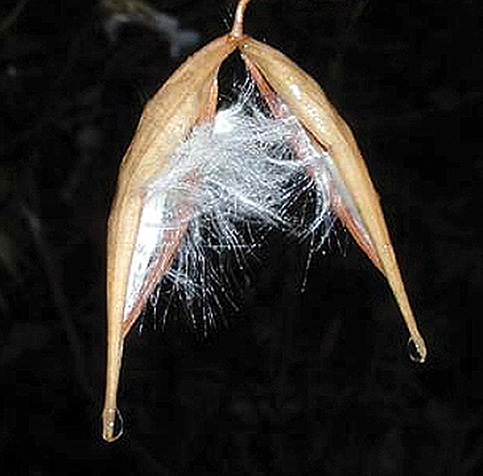
Ecological Threat
Black swallow-wort displaces native plants and changes soil chemistry. It tolerates a wide range of light, salt and moisture conditions and appears to have an allelopathic affect on milkweed.
It’s a menace to Monarchs because it’s a non-native relative of milkweed that’s toxic to the larvae of the butterflies. (It’s also toxic to livestock.)
Black swallow-wort’s similarity to milkweed fools some monarch butterflies into laying their eggs on the plant, but the larvae do not survive.
Control
Pulling can be ineffective. For small groupings you can dig to remove the crown and roots. If incompletely removed it can sprout from crowns or its fibrous root system.
As with many invasives, a multi-year plan using several methods is probably the best approach. Repeated cutting or mowing can be effective over two or more seasons. Mow just as the seed pods are beginning to form to prevent seed dispersal. Large infestations may require the use of herbicides.
A leaf-eating moth (Hypena opulenta) was released in Massachusetts and Rhode Island as a biocontrol in 2017.
For more information check out the Connecticut Invasive Plant Working Group’s website at cipwg.uconn.edu
